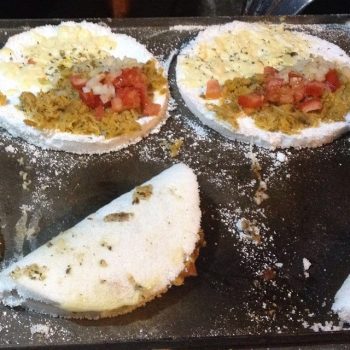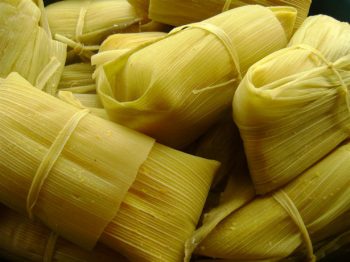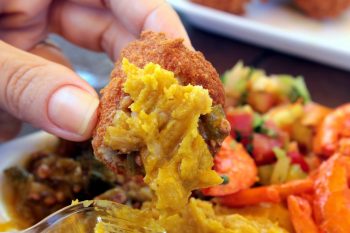A guide to Brazilian street food II Posted by carol on Oct 21, 2019 in Brazilian Profile, Culture, Customs
Olá famintos leitores de nosso blog, como vocês estão? Hello hungry blog readers, how are you? I hope you have an appetite, since today’s text, as promised, will get on with the second part of the best known comidas de rua (street food) found in Brazil. If you missed the first part, exclusively dedicated to carnivores, click here to check it out. If not, come with us as it’s time for us to saciar nossa fome (satisfy our hunger)!
Brazil is rich not only in carne (meat), but in many other delícias (treats). Many of them may seem strange to you, but believe me, they are truly gostosos (tasty)! To start our list, let’s go with the notorious tapioca. Tapioca is made with hydrated cassava flour flakes and you can usually find it with several different recheios (fillings), from the traditional one with manteiga (butter), but also with meat, queijo (cheese), sun-dried tomatoes and even some sweet takes with doce de leite (caramel) or morango (strawberry). It is very popular in the northeast of the country, but because of its low calories and high nutritional value, it has become a new fad among those who are looking for a dieta saudável (healthy diet).
Moving along with more natural, wholesome refeições (meals), it is very common along Brazilian streets to eat milho verde cozido (corn on the cob), usually seasoned with salt or butter. In addition, you can find other corn-based delicacies such as pipoca (popcorn), pamonha and cural. Brazilian popcorn is reminiscent of the North American one, but don’t be alarmed if they come with bacon or even cheese! As for pamonha, it consists of a corn paste wrapped and cooked in corn straw, while the cural is a sweet pudding made from corn and leite (milk). All of these variations are very traditional at Brazil’s June festivities, but you can try them all year round.
Fried food is hard to resist, isn’t it? So, let’s move on the slightly fatter street foods! Have you heard of pastel? This is um salgado (a savory pastry) you find in every Brazilian lanchonete (snack bar). Its crispy massa (dough) is made with flour and a little cachaça, which gives it a slightly sour aftertaste, but very light and delicate gosto (taste). Fried in large oil pans, the fillings vary by region, but the traditional ones are meat, cheese, “pizza” (a mix of meat, cheese, tomatoes and oregano) and even shrimp. Vai me dizer que você também não ficou com água na boca? Are you going to tell me your mouth isn’t watering right now?
To wrap this up (after all, I’m hungry), I present you a dish that we have already mentioned a few times in our texts, so the name should not be strange to you. We are talking about acarajé. Traditional from Bahia, Acarajé is a food of African and Brazilian origin, considered as a religious symbol in which baianas offer to their devoted saints. Its dough is made from feijão (black-eyed peas), cebolas (onions) and salt, but deep-fried in palm oil. Its filling is rich, with many textures and sabores (flavors), usually made with vatapá (a cashew nut paste, coconut milk and various spices), caruru (okra), pepper and dried camarão (shrimp).
Time to sign-off! So, did you enjoy our second part about street food? Have you ever been to Brazil and tried any of these? Tell us what you think of them and comment on other tips and suggestions.

Build vocabulary, practice pronunciation, and more with Transparent Language Online. Available anytime, anywhere, on any device.







Comments:
Ellen:
Loving all the info and can’t wait to journey to Brazil to enjoy all the described goodies.
carol:
@Ellen I’m sure you will love them, Ellen!
Thanks for reading 🙂